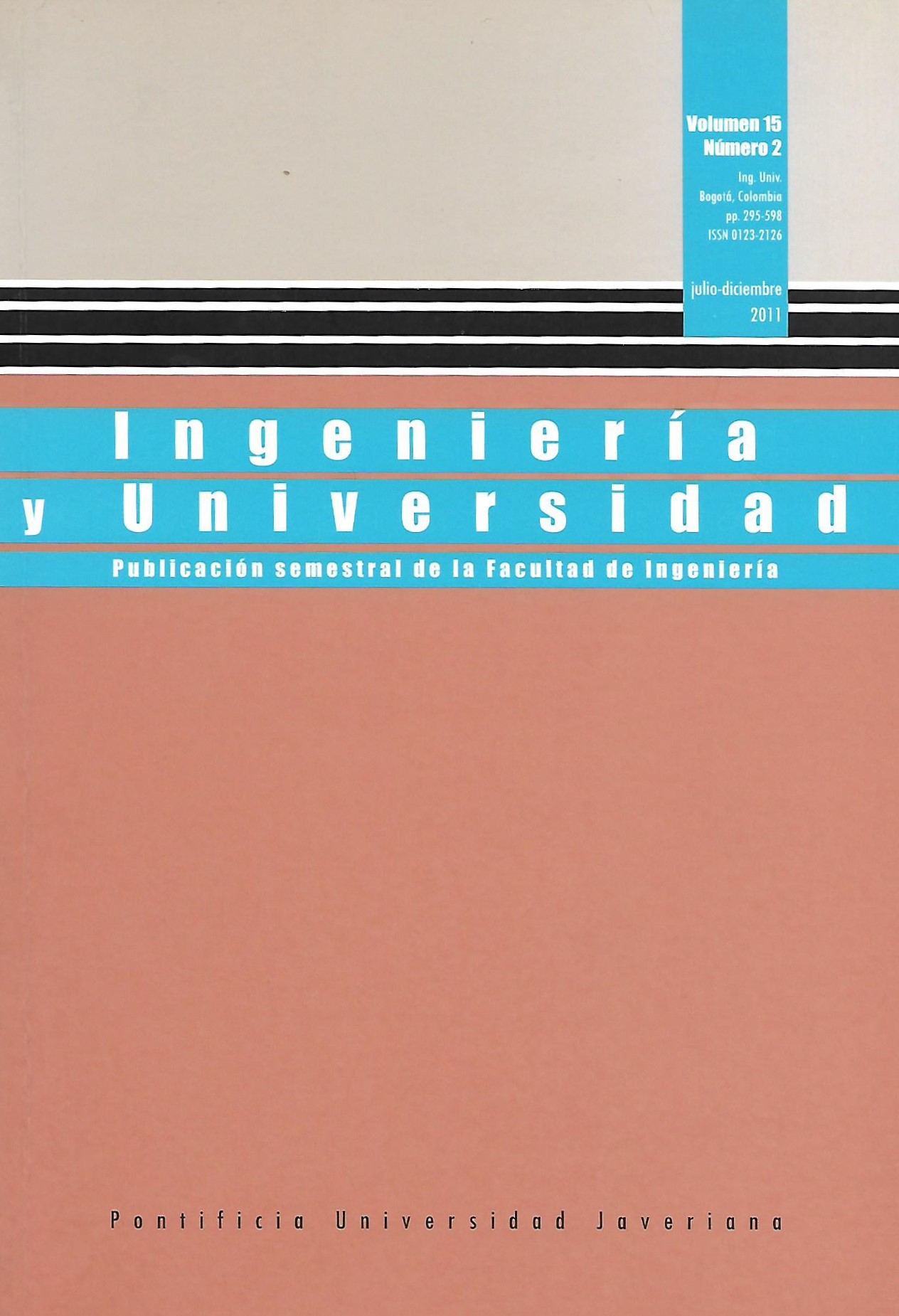Abstract
This work presents the formulation and implementation of the solution to partial differential equation systems through the Explicit Green Approach (ExGA). This method uses the Laplace Transform to obtain the solution in the frequency domain and, then, through inverse transform, it makes it posible to explicitly obtain the value that solves the partial differential equation. The versatility of this method in the reduction of computer resources for solving type 2 and 1 linear problems can be observed. Four numerical examples for the heat and elasticity transfer equation are offered. Results show the accuracy of this method, which can use time differentials which are higher to those used in classic time integration algorithms with a solution which is closer to an order algorithm.
BATHE, K. J. y WILSON, E. L. Stability and accuracy analysis of direct integration methods. Earthquake Engineering and Structural Dynamics. 1973, vol. 1, pp. 283-291.
CARRER, J. A. M. y MANSUR, W. J. Time-domain BEM analysis for the 2D scalar wave equation: initial conditions contributions to space and time derivatives. International Journal for Numerical Methods in Engineering. 1997, núm. 39, pp. 2188-2469.
CEBECI, T. Analysis of turbulent flows. Ámsterdam: Elsevier, 2004.
GERSHENFELD, N. The nature of mathematical modelling. Cambridge: Cambridge University Press, 1999.
HILBER, H. M.; HUGHES, T. J. R. y TAYLOR, R. L. Improved numerical dissipation for time integration algorithms in structural dynamics. Earthquake Engineering and Structural Dynamics. 1977, núm. 5, pp. 283-292.
HUGHES, T. J. R. The finite element method - linear static and dynamic finite element analysis. New York: Dover Publishers, 2000.
KUTTA, W. Beitrag zur Näherungsweisen integration totaler differentialgleichungen. Zeitschrift für Mathematisch Physik. 1901, núm. 46, pp. 435-453.
LEVEQUE, R. J. Finite difference methods for differential equations. Washington: University of Washington; 2006.
LOUREIRO, F. S. Métodos de integração temporal baseados no cálculo numérico de funções de Green a traves do métodos dos elementos finitos. MSc Thesis, Universidade Federal do Rio de Janeiro, Brasil, 2007.
MANSUR, W. J.; LOUREIRO F. S.; SOARES, D. JR.; DORS, C. Explicit time-domain approaches based on numerical Green’s functions computed by finite differences - The ExGA family. Journal of Computational Physics. 2007; núm. 227, pp. 851-870.
MANSUR, W. J.; VASCONCELLOS, C. A. B.; ZAMBROZUSKI, O. C.; ROTUNNO FILHO, N. J. M. Numerical solution for the linear transient heat conduction equation using an Explicit Green’s Approach. Journal of Heat and Mass Transfer. 2008, vol. 52, núms. 3-4, pp. 694-701.
NEWMARK, N. M. A method of computation for structural dynamics. Journal Engineering Mechanics Division, ASCE 85. 1959, pp. 67-94.
OZISIK, M. N. Heat conduction. New York: John Wiley & Sons, 1993.
RUNGE, C. Uber die numerishe auflösung von differentialgleichungen. Mathematische Annalen. 1895, núm. 46, pp. 167-178.
SOARES, JR. D. y MANSUR, W. J. A time domain FEM approach based on Implicit Green’s functions for non-linear dynamic analysis. International Journal for Numerical Methods in Engineering. 2004, núm. 62, pp. 664-681.
WOOD, W. L.; BOSSAK, M. y ZIENKIEWICZ, O. C. An alpha modification of Newmark’s methods. International Journal for Numerical Methods in Engineering. 1981, vol. 15, núm. 10, pp. 1562-1566.
ZIENKIEWICZ, O. C. y MORGAN K. Finite elements and aproximation. Philadelphia: Dover Publications, 1982.
ZIENKIEWICZ, O. C. y TAYLOR R. L. El método de los elementos finitos. Las bases. Barcelona: CIMNE, 2000.
ZIENKIEWICZ, O. C.; WOOD, W. L. e HINE, N. W. A unified set of single step algoritms Part 1. General formulation and aplications. International Journal for Numerical Methods in Engineering. 1984, vol. 20, pp. 1529-1552.
This journal is registered under a Creative Commons Attribution 4.0 International Public License. Thus, this work may be reproduced, distributed, and publicly shared in digital format, as long as the names of the authors and Pontificia Universidad Javeriana are acknowledged. Others are allowed to quote, adapt, transform, auto-archive, republish, and create based on this material, for any purpose (even commercial ones), provided the authorship is duly acknowledged, a link to the original work is provided, and it is specified if changes have been made. Pontificia Universidad Javeriana does not hold the rights of published works and the authors are solely responsible for the contents of their works; they keep the moral, intellectual, privacy, and publicity rights.
Approving the intervention of the work (review, copy-editing, translation, layout) and the following outreach, are granted through an use license and not through an assignment of rights. This means the journal and Pontificia Universidad Javeriana cannot be held responsible for any ethical malpractice by the authors. As a consequence of the protection granted by the use license, the journal is not required to publish recantations or modify information already published, unless the errata stems from the editorial management process. Publishing contents in this journal does not generate royalties for contributors.


